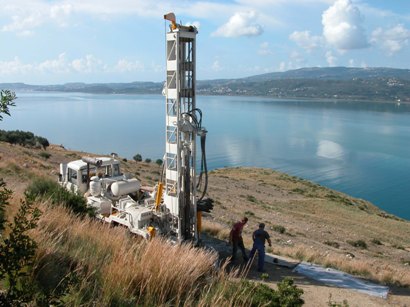
Many devices
Drilling on the course of "Strabo's Channel" has already yielded encouraging results (Geoscientist February 2006, pp8-10). FUGRO will now follow up by conducting further drilling and geophysical surveys, with the aim of constructing a 3D image of the subsurface and establishing a reliable reconstruction of how the area appeared 3000 years ago before, the team believes, geological processes conspired to obliterate the seaway. FUGRO's expertise in groundwater assessment will be employed to establish the routes of ancient and modern watercourses on the isthmus and peninsula – work that the team hopes will also benefit modern islanders, who need reliable fresh water today as much as their forebears did in the Bronze Age.
FUGRO also hopes that it will be able to sponsor a full-time geology PhD studentship under the NERC Collaborative Awards in Science & Engineering (CASE) scheme, which matches research council and industry funding. If the studentship bid is successful it will enable a continuing programme of research to be carried out – in place of the periodic site visits and tests on which the project has so far relied.
Welcoming FUGRO's involvement, Prof. John Underhill (University of Edinburgh) said: "It is wonderful news that such a world-renowned geophysical company has responded so positively to the geoscientific challenge established by our research results. FUGRO’s multidisciplinary approach, state-of-the-art technologies and in-house expertise will enable us to perform the most thorough and rigorous test of the “Strabo’s Channel” proposal. Our new collaboration with FUGRO and the continuing close support of Greece’s IGME geological institute are expected to provide important new insights into the evolution of this remarkable landscape over the past 10,000 years."
For FUGRO, Chief Executive Klaas Wester said: "The technical challenge presented by the project calls for a broad range of investigative solutions. This is an opportunity for Fugro to showcase many of the specialised geophysical, geotechnical and survey services that we offer, while at the same time benefiting the local community."